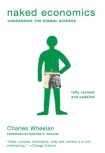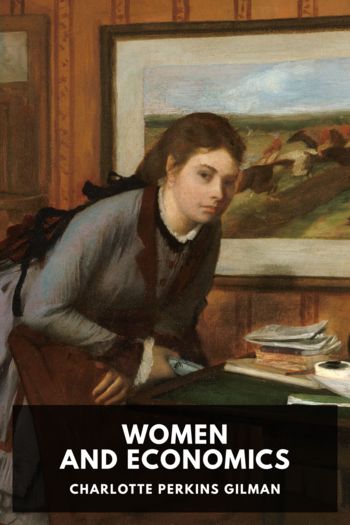Naked Economics by Wheelan, Charles (spanish books to read .txt) 📕

Read free book «Naked Economics by Wheelan, Charles (spanish books to read .txt) 📕» - read online or download for free at americanlibrarybooks.com
Read book online «Naked Economics by Wheelan, Charles (spanish books to read .txt) 📕». Author - Wheelan, Charles
The theory is interesting; the data are amazing. When test scores are used as a proxy for ability, the brightest individuals shun the teaching profession at every juncture. The brightest students are the least likely to choose education as a college major. Among students who do major in education, those with higher test scores are less likely to become teachers. And among individuals who enter teaching, those with the highest test scores are the most likely to leave the profession early. None of this proves that America’s teachers are being paid enough. Many of them are not, especially those gifted individuals who stay in the profession because they love it. But the general problem remains: Any system that pays all teachers the same provides a strong incentive for the most talented among them to look for work elsewhere.
Human beings are complex creatures who are going to do whatever it takes to make themselves as well off as possible. Sometimes it is easy to predict how that will unfold; sometimes it is enormously complex. Economists often speak of “perverse incentives,” which are the inadvertent incentives that can be created when we set out to do something completely different. In policy circles, this is sometimes called the “law of unintended consequences.” Consider a well-intentioned proposal to require that all infants and small children be restrained in car seats while flying on commercial airlines. During the Clinton administration, FAA administrator Jane Garvey told a safety conference that her agency was committed to “ensuring that children are accorded the same level of safety in aircraft as are adults.” James Hall, chairman of the National Transportation Safety Board at the time, lamented that luggage had to be stowed for takeoff while “the most precious cargo on that aircraft, infants and toddlers, were left unrestrained.”5 Garvey and Hall cited several cases in which infants might have survived crashes had they been restrained. Thus, requiring car seats for children on planes would prevent injuries and save lives.
Or would it? Using a car seat requires that a family buy an extra seat on the plane, which dramatically increases the cost of flying. Airlines no longer offer significant children’s discounts; a seat is a seat, and it is likely to cost at least several hundred dollars. As a result, some families will choose to drive rather than fly. Yet driving—even with a car seat—is dramatically more dangerous than flying. As a result, requiring car seats on planes might result in more injuries and deaths to children (and adults), not fewer.
Consider another example in which good intentions led to a bad outcome because the incentives were not fully anticipated. Mexico City is one of the most polluted cities in the world; the foul air trapped over the city by the surrounding mountains and volcanoes has been described by the New York Times as “a grayish-yellow pudding of pollutants.”6 Beginning in 1989, the government launched a program to fight this pollution, much of which is caused by auto and truck emissions. A new law required that all cars stay off the streets one day a week on a rotating basis (e.g., cars with certain license plate numbers could not be driven on Tuesday). The logic of the plan was straightforward: Fewer cars on the road would lead to less air pollution.
So what really happened? As would be expected, many people did not like the inconvenience of having their driving days limited. They reacted in a way that analysts might have predicted but did not. Families who could afford a second car bought one, or simply kept their old car when buying a new one, so that they would always have one car that could be driven on any given day. This proved to be worse for emissions than no policy at all, since the proportion of old cars on the road went up, and old cars are dirtier than new cars. The net effect of the policy change was to put more polluting cars on the road, not fewer. Subsequent studies found that overall gas consumption had increased and air quality did not improve at all. The policy was later dropped in favor of a mandatory emissions test.7
Good policy uses incentives to some positive end. London has dealt with its traffic congestion problems by applying the logic of the market: It raised the cost of driving during the hours of peak demand. Beginning in 2003, the city of London began charging a £5 ($8) congestion fee for all drivers entering an eight-square-mile section of the central city between 7:00 a.m. and 6:30 p.m.8 In 2005, the congestion charge was raised to £8 ($13), and in 2007, the size of the zone for which the fee must be paid was expanded. Drivers are responsible for paying the charge by phone, Internet, or in selected retail shops. Video cameras were installed in some 700 locations to scan license plates and match the data against records of motorists who have paid the charge. Motorists caught driving in central London without paying the fee are fined £80 ($130).
The plan was designed to take advantage of one of the most basic features of markets: Raising prices reduces demand. Raising the cost of driving discourages some drivers and improves the flow of traffic. Experts also predicted an increase in the use of public transit, both because it is a cheap alternative to driving, but also because buses would be able to move more quickly through central London. (Faster trips lower the opportunity cost of taking public transit.) Within a month, the results were striking. Traffic fell 20 percent (settling after several years at 15 percent lower). Average speed in the congestion zone doubled; bus delays were cut in half; and the number of bus passengers climbed 14 percent. The only unpleasant





Comments (0)